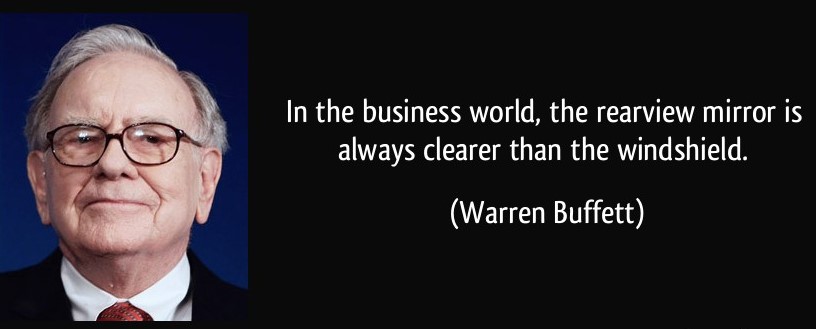Maruti says we are a country obsessed with mileage; see its famous NASA ad ‘Kitna Deti Hai’
Indians are known to be very smart consumers; always looking for value-for-money offerings. Fortunately or unfortunately, that should make us very good ‘Value Investors’ as defined by Ben Graham.
However, how do we know if a stock is a bargain or not? By default P/e ratio has become that barometer on which majority is trying to answer this critical question. You mention a stock and the first question would be ‘Boss iska P/e kitna hai?’ (How much is its P/e?)
P/e which is price-to-earnings ratio is the most commonly used valuation ratio to make sense of how expensive or cheap a stock is. The reason for its popularity is its simplicity; P/e of 20 means the business is available at a market capitalization which is 20 times its annual earnings, in other words the stock price is trading at 20 times its earnings per share (EPS). The ratio which can anyways be quickly calculated mentally, is also available widely on all portals and invariably the first most people would check.
Through this post, I will briefly cover three ways in which lot of us get it wrong when it comes to making sense out of P/e:
Folly 1: Lower the better; always true?
A lower P/e does not always imply that the stock is a bargain. Though the numerator of this ratio (price) is for everybody to see, what we ignore is the denominator (quality of earnings) where lies the most important information. This is all the more important in case of cyclical businesses. For instance look at following information pertaining to Ceat Tyres:
Ceat |
||
| FY12 | FY15 | |
| EPS (Rs) | 5.2 | 78.4 |
| P/e | 16.7 | 10.3 |
| Stock Price | 87 | 804 |
An investor basing decision only on P/e would find it expensive in 2012 at P/e of ~17 and may give a pass to a potential 10-bagger, without realizing that the earnings are depressed due to sky rocketing rubber prices (key raw material) that almost went 3x in previous three years and effected profitability of entire industry.
The same investor might find Ceat attractive now given the P/e is much lower at 10 times, again missing the point that operating margins and hence earnings are cyclically high, thanks to huge tailwind provided by falling rubber prices which doubled margins.
In reality, Ceat was cheap at 17 P/e in 2012 and could be relatively expensive today at 10 P/e in 2015.
Then there are some businesses where inherent economics are bad or are run by crooks. These businesses are being offered to you at low P/e because of some ‘reason’ and not necessarily because they are ‘hidden gems’. Until and unless there is a trigger like change of management, change of heart (chor bane morTM theme of Nooresh) or a new strategy, buying such businesses only on the basis of low P/e may be akin to catching a falling knife.
On the other side of the spectrum, there are some beautiful companies out there which trade at optically ‘High’ multiples; but what many ignore is how their earnings are grossly understated.
Warren Buffet spoke about ‘Owners Earnings’ in his 1986 Letter to Shareholders. Thomas Russo also talks about such companies as ones with ‘capacity to suffer‘ in the short term to reap benefits in the long term. These companies are investing today to remain relevant and to have ability to continue to grow tomorrow, with meaningful investments going into research & development, technology, branding etc. which all may be creating intangible assets but are being expensed to P&L every year.
Folly 2: Comparing apple with oranges
Based on the limited data given in the table below, please answer the following three questions
| Company | Liberty Shoes | Bata India | Relaxo Footwears |
| P/e (22-Dec-15) | 21.2 | 26.6 | 46.4 |
- Given that all three operate in the footwear industry, can we assume they are all ditto same?
- Can we conclude Liberty is cheap given valuation multiple of other two?
- Can we conclude Relaxo is expensive given market leader Bata trades at lower multiple?
The correct answer to all three questions is ‘Insufficient Information’
And the reason is because all three may be vastly different in terms of:
- Presence in different categories within that industry
- Business Model: In-house manufacturing Vs. Outsourcing (Asset light)
- Different geographic exposures, reach and growth strategies
- Beneficiary of Industry Tailwind vs. Own Efforts
- Leveraged Balance Sheet Vs Debt-free
- Complacent Management Vs Fire-in-the-belly
- Lala Vs Professional Management
- Big Talk vs. Proven Execution Capabilities
- Standards of Corporate Governance, Transparent & Timely Disclosures
- Respect for Minority Shareholders and other Stakeholders
- Me too Vs. Differentiated, Established/Emerging Brand……..
Just the way no two humans are 100% alike and hence cannot be compared; we should ideally not be comparing two different companies to benchmark valuations against each other.
Let’s say even if both have a lot in common, aren’t we assuming the peer stock is rightly valued? What if even that is grossly overvalued/undervalued and hence making this stock seem cheap/expensive?
As they say, “if you want to justify buying a 30 P/e stock, compare it with a 50 P/e stock and your job is done”.
Benchmarking valuations to a competitor is lame and a convenient short-cut which can lead to wrong decision making. Let investment bankers do that, but any serious long term investor should ideally avoid this folly.
How you value a business should only be dependent on two things:
- Business Quality and
- Management Quality
And then assign a P/e you think this business should command, rather than starting by first looking at stock’s and its peer’s P/e.
Folly 3: To drive while looking at rear view mirror
Majority of the investors talk about trailing-twelve-months (ttm) multiple, as that is what is widely available at finance portals like moneycontrol or BSE’s website. This is nothing but earnings per share of previous four quarters / 12 months.
But aren’t we betting on the future earnings? So, do entry multiples really matter? I am sure a lot of people would still answer ‘yes’ to it.
In that case my follow-up question would be- how would one arrive at a P/e for a company that incurred one-time loss last year and has negative earnings? One cannot as the denominator is now negative. In this case the same person will try to work out the expected earnings next year or year after that and decide whether its attractive or not. This essentially makes last year’s profit/loss figure less relevant and future earnings potential the key factor.
Whether you pay a trailing P/e of 10 or 30 or 50, in the long term your returns broadly would depend on three factors:
- Future earnings growth A function of sales growth, margin expansion due to operating leverage and/or sales-mix change and interest cost saving (retiring debt).
A 10 P/e stock would fail to generate good returns if the business fails to grow its earnings per share, whereas a 30 P/e stock can create massive wealth if its earnings grow consistently at 30-40% CAGR. That is what makes earnings growth the most important driver of stock returns in the long run. Classic example is Page Industries which was never ‘cheap’ but due to consistent and high growth in earnings created massive wealth over last 5-6 years.
- Exit multiple A function of market perception of further growth potential in the business, over the next period.
Prof. Sanjay Bakshi, who has been a guiding force in investing community, has explained the relevance of thinking in terms of ‘exit multiples’ really well in this email exchange with Safal Niveshak and another post Here. Prof. suggests to be conservative while assigning exit P/e as its far out in the future. He himself never assumes more than 20, which is by the way is his best case scenario.
An astute investor and my friend Abhinav, later wrote a post applying this dope of wisdom “Is there a bubble in Quality”. This post would give you a slightly different flavor of ‘Exit Multiple’, and what kind of growth ‘Quality/Moat’ Companies need to report to justify ‘holding’ on to them.
- Dividends A function of reinvestment opportunity within the business
If you invest in large companies generating lot of free cash and high payout, dividends can make meaningful contribution to returns. However in our case, we primarily invest in emerging companies from small & mid cap space, and these companies have a huge run way to grow by reinvesting capital; dividend payouts are low and hence the yields contribute insignificantly to overall returns.
Now, there is no way we can predict the earnings of a company for next year or for 2020 with any precision. However, as investors we would fail in our role if we do not even have a range of possible outcomes with their likely probabilities.
We do not know whether company X from our portfolio can report Rs 23.56 EPS in 2020, but can we attach a high (lets say 70-80%) probability that the figure will be above Rs 20 and with a reasonable exit multiple of 15 we can at least make XX% CAGR in this stock, which is above or close to our hurdle rate? And the answer is ‘Yes We Can’. By keeping assumptions conservative and working out a base case (highly likely) scenario, one can position himself for good luck. At the end of the day, investing is never certain, it’s all about probabilities.
To Summarize:
While using P/e as a valuation tool we need to make sure we are not committing any of the following mistakes:
- Assuming lower is always better and vice-versa
- Benchmarking P/e against peers or industry average ignoring the differences in business quality and management quality
- Considering only trailing multiples with little regard to exit multiple and future earnings potential.
—————–
PS: As students of investing, we are also learning everyday. This blogpost is just an attempt to share how our thinking has evolved over time. I am sure the ‘process’ would continue to evolve and there will be lots of mistakes as well as learning on the way; as they say ‘its about the journey and not the destination’.



Leave a Reply